There has been some discussion on the web about long-exposure noise reduction in the Nikon D810 that occurs even when the menu setting for such process is set to off. I have seen some indications of this kind of processing in my dark-field versus shutter speed tests.
Now that I have a tool for analyzing the spatial spectra of images, I can take a look at some of the Nikon dark-field images made when I took the data for these graphs.
First, the dark-field spectrum for the green channel, 1/8000 second at ISO 1000:
Except at very low spatial frequencies, the spectra are flat, which indicates white noise, which means no spatial filtering.
Here’s the histogram of that image:
There’s a little clipping at a bit over 570, and there are dropouts in the red and blue channels because of Nikon’s 14-bit digital white balance prescaling, but the histograms look normal otherwise.
Now at 15 seconds with the camera set for no long exposure noise reduction:
There is essentially no low-pass spatial filtering taking place.
The histogram of the 15 second, no NR image:
A little different, particularly the double-high bucket at around 600 in the red and blue channels. You’d expect this with digital prescaling, and I don’t know why it didnt’ occur with the 1/8000 second image.
Now with long exposure noise reduction invoked:
Quite a bit of spatial filtering.
The histogram:
There’s only one empty bucket. Thus, the spatial filtering is not median filtering, which cannot fill holes in the histogram; it must be some kind of averaging filter.
I’ll do some more testing and report.
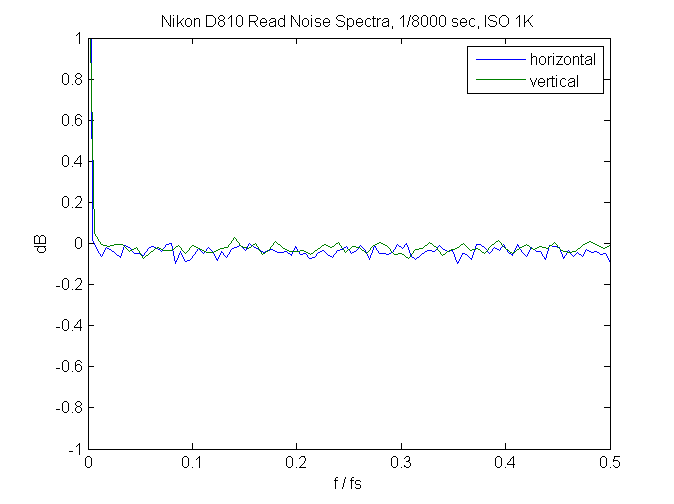
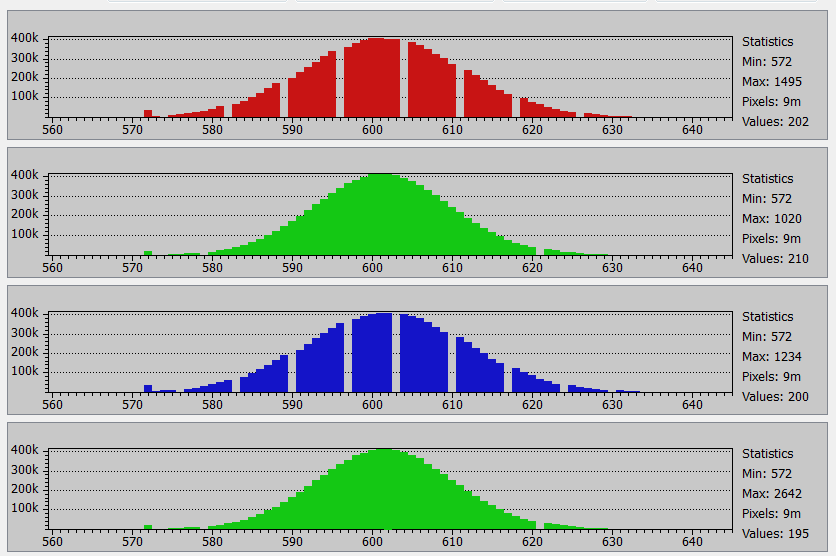
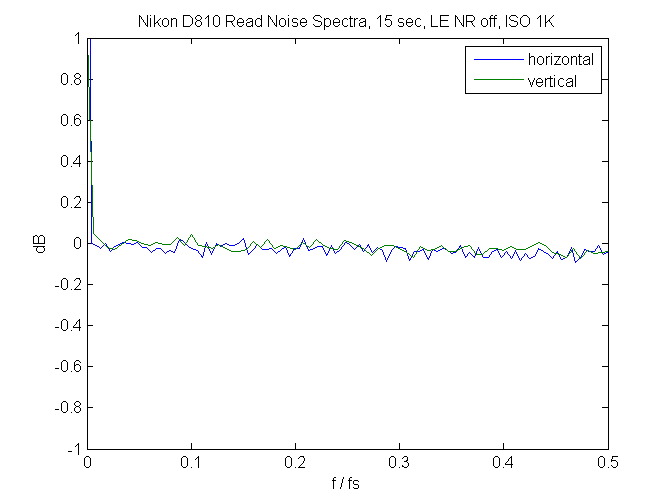
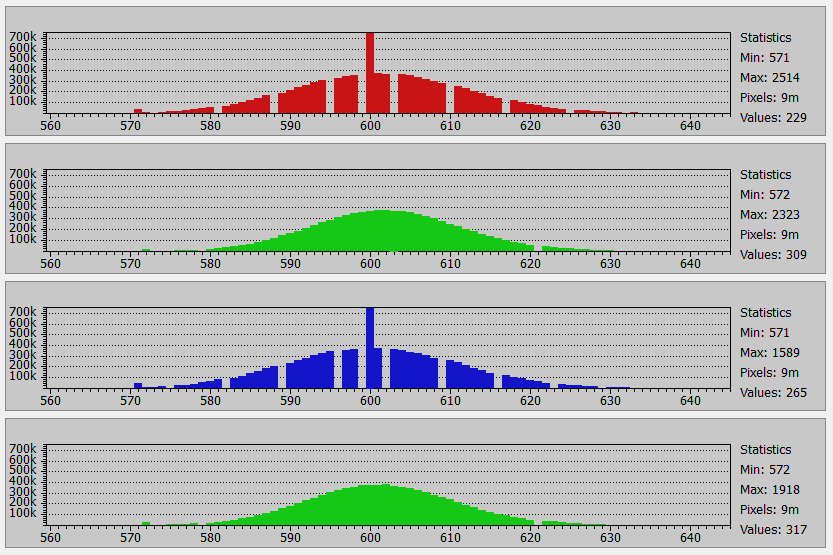
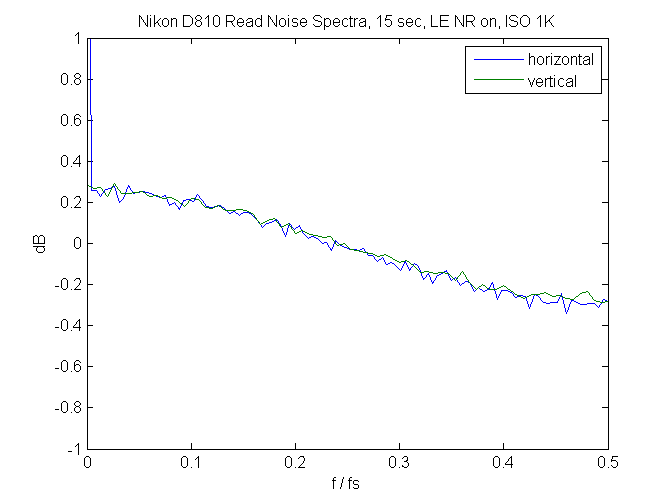
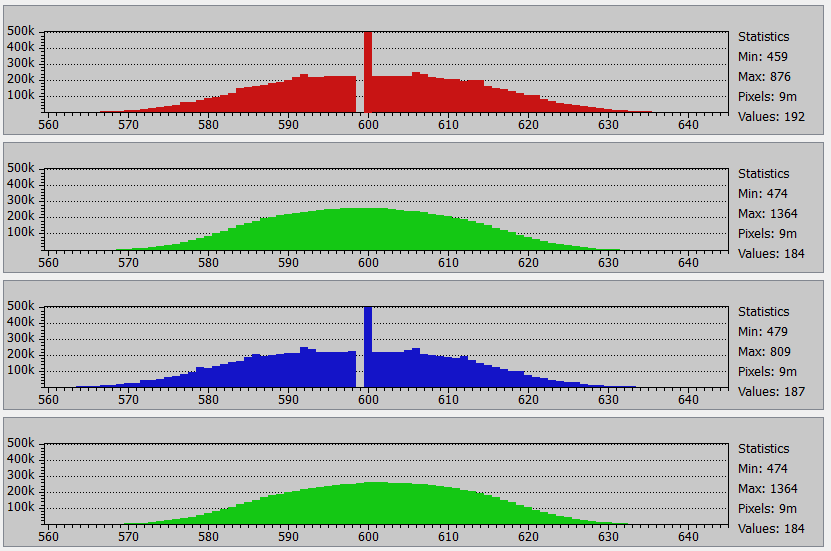
Leave a Reply